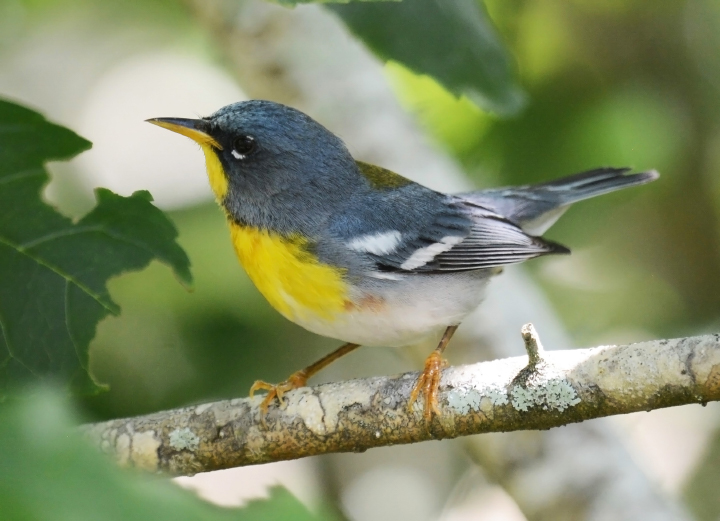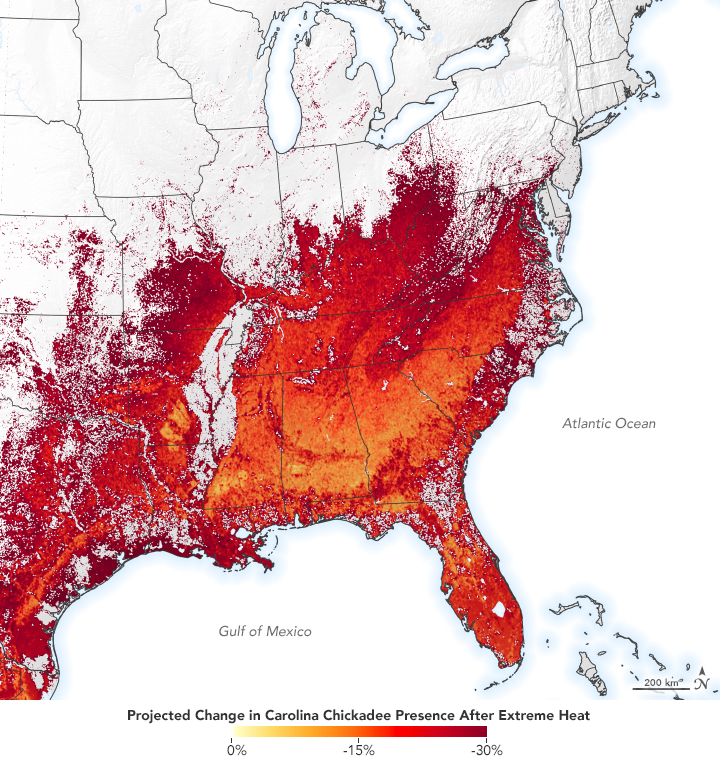Many bird species are sensitive to temperature changes, so they have a role to play as harbingers of a changing climate. New research shows that several bird species have already shifted their behavior in response to the sort of hotter and drier weather predicted by climate change models. These responses vary based on the duration of the extreme weather and characteristics of the bird species.
Extreme weather events such as heatwaves and droughts are becoming more common with climate change. Combining high-resolution weather data from Daymet and ground-based observations from eBird, a global citizen science initiative, a team of researchers from the University of Wisconsin-Madison and Cornell University recently investigated how 109 bird species responded to such events in eastern North America.
Birds are considered a good taxonomic group for studying environmental change because they are easily observed by researchers and citizen scientists. In fact, birdwatchers around the world have contributed more than 650 million records to the eBird mobile application managed by the Cornell Lab of Ornithology. It is one of the biggest databases of bird sightings in the world.
“For the first time, we can look at how species responded immediately following extreme weather conditions over the scale of an entire continent,” said Jeremy Cohen, who led the research as a postdoctoral researcher at the University of Wisconsin-Madison.
Cohen and colleagues found that certain birds were observed less frequently immediately after extreme weather than after normal weather conditions. Beyond the simple presence or absence of species, the research team also used eBird data to scrutinize bird characteristics such as body mass, foraging behavior, migration distance, and prevalence. They found that migration distance and prevalence (how common a bird is) were the biggest predictors of behavior shifts in response to extreme weather.

At weekly scales, birds that are year-round residents or that migrate only short distances were observed less often following a week of extreme heat. For example, the Carolina Chickadee (photo above), which is frequently spotted in backyards across the southeastern U.S., does not migrate throughout its lifetime. “In its whole life an individual might move only a few kilometers,” Cohen said.
After a week of extreme heat, the Carolina Chickadee was observed less frequently compared to normal weather conditions. The map at the top of the page shows the predicted reduction in Chickadee sightings following a heat wave. The Chickadee was most impacted by extreme temperatures at the edges of its range, such as in Texas and West Virginia.
Cohen noted that it is difficult to know for sure what happens to birds when they are reported less often by eBird users, but scientists know that birds cannot afford to reduce their activity for long. They need to be active to forage for food. Species that appear less frequently during extreme weather may shift their nesting locations to cooler locations. Others may die if they don’t find a habitat more amenable to their feeding or breeding habits.
On the other hand, birds that migrate longer distances were more frequently observed after a week of extreme heat. Cohen speculated that it may be because migrating birds are often exposed to warm, tropical temperatures and are able to tolerate them. Also, many tropical migrant birds are insect-eaters and could be pursuing insects that are active on hot days.
Cohen and colleagues also looked at how birds responded to extremely dry conditions. Common species such as the American Crow did not seem to be affected by seasonal drought. However, some less common birds such as the Northern Parula (photo below) were observed less frequently after extended drought. Some birds are specialized to a certain habitat or food source, which drought could disrupt.

NASA Earth Observatory map by Lauren Dauphin, using data from Cohen, J.M. et al. (2020). Photographs courtesy of Jeremy Cohen. Story by Emily Cassidy, based on a NASA Earthdata news feature.
"bird" - Google News
August 19, 2020 at 05:00AM
https://ift.tt/2FCa6FT
How Birds Respond to Extreme Weather - NASA
"bird" - Google News
https://ift.tt/2s1zYEq
https://ift.tt/3dbExxU
Bagikan Berita Ini















0 Response to "How Birds Respond to Extreme Weather - NASA"
Post a Comment